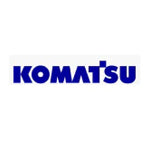How to Add Patches Without Sewing?
Want that instant upgrade on jackets, totes, caps, or uniforms—minus the needle and thread? Good news: there are several no-sew ways to attach patches that still look neat, last long, and keep fabrics intact. Whether you’re customizing for a business, a team, or your own weekend fit, here’s your craft-smart guide to adding custom patches the fuss-free way.
Quick link: Explore premium custom patches you can apply without sewing.
1) Iron-On: The Classic, Clean Finish
Best for: Cotton, cotton blends, denim, canvases, sturdy twills
Avoid: Delicate synthetics, heat-sensitive finishes, waterproof shells
What you’ll need: Iron or heat press, pressing cloth (thin cotton), flat heat-safe surface
How to do it:
-
Pre-wash and fully dry the garment (no fabric softener).
-
Place the patch where you want it. Cover with a pressing cloth.
-
Apply firm, even heat (medium-high) for 10–15 seconds.
-
Flip the garment and heat from the back for another 10–15 seconds.
-
Let it cool completely before testing the edges.
Pro tips from the shop floor:
-
Time + temperature + pressure = bond. Skimp on any of the three and corners lift.
-
For textured fabrics (e.g., heavy canvas), add a second heat pass with more pressure.
Care: Turn garment inside out and wash on gentle. Air-dry if possible. If edges lift after several washes, re-press with a cloth.
2) Fabric Glue: Peel-Free on Tricky Spots
Best for: Placement over seams, curved areas (caps), or places an iron can’t reach
Avoid: Ultra-stretch fabrics and items that need frequent hot washes
How to do it:
-
Mark placement. Lightly roughen super-smooth fabrics with a fabric brush for grip.
-
Apply a thin, even bead of washable fabric adhesive to the patch back—avoid the edges flooding out.
-
Press firmly, then weight it down with a book for the recommended cure time (usually 12–24 hours).
Why it works: Modern textile adhesives flex with fabric, so you get a soft hand feel and a clean edge without shine from heat.
3) Fusible Web/Sheets: DIY Iron-On Backing
Best for: Turning sew-on emblems into iron-on patches
How to do it:
-
Cut a piece of fusible web slightly smaller than the patch.
-
Fuse it to the back of the patch (paper side up), then peel the paper.
-
Position and fuse to the garment as you would an iron-on.
Pro tip: Round sharp corners with small scissors—curves resist peeling better than points.
4) Hook-and-Loop (Velcro®-Style): Swap-Out Branding
Best for: Workwear, uniforms, bags, caps—any setup where you need to change patches quickly
Two ways to mount:
-
Adhesive-back hook-and-loop on both the patch and the garment area (fastest).
-
Hybrid method: Iron-on or glue the loop side to the garment and the hook side to the patch for a sturdier hold.
Why choose this: One base, many looks—perfect for campaigns, seasonal roles, or event teams.
5) Heat-Activated Film (Low-Heat for Synthetics)
Best for: Polyester teamwear, windbreakers, and technical fabrics that dislike high heat
How to do it: Use a low-temp heat film backing on your patch, then apply with controlled heat and firm pressure. If your fabric is extra sensitive, try a Teflon sheet plus lower temps for a few longer presses.
6) Safety-Pin + Badge-Style Backs: Removable & Event-Ready
Best for: Short-term events, photo days, or borrowed wardrobe pieces
Pop a slim safety pin or badge clutch through a hidden area of the patch (or a small bar sewn to the patch back by your maker). It’s not permanent—but it protects heirloom or rented garments.
Choosing the Right No-Sew Method (At a Glance)
-
Everyday tees/denim/canvas: Iron-on or fusible web
-
Structured caps or seams: Fabric glue
-
Uniforms/bags with rotating roles: Hook-and-loop
-
Techwear/poly shells: Low-temp heat film
-
One-day events: Safety-pin or badge clutch
Placement That Looks Pro
-
Jackets: Left chest (palm-width below shoulder seam), sleeve near the cuff for “rank” style, or large back centerpiece.
-
Caps: Center front panel; for 5-panel caps, align with the seam line.
-
Totes: Upper third, centered; or corner-place for a modern offset.
-
Uniform polos: 7–9 cm wide on left chest for readability and balance.
Use a ruler and painters’ tape to mark baselines before committing to heat or glue.
Make It Last: Care & Maintenance
-
Wait 24 hours after application before wearing, 48 hours before washing.
-
Cold wash, gentle cycle, inside-out. Avoid bleach and harsh softeners.
-
Air-dry. If you must machine-dry, use low heat.
-
For iron-ons: a quick re-press (with cloth) refreshes the bond after months of wear.
Design Matters: Build a Patch That Stays Sharp
-
Tight embroidery & clean edges resist fray and keep logos crisp.
-
Merrowed borders (that classic rope-like edging) are great for durability on round or shield shapes.
-
Heat-cut borders suit complex silhouettes and help corners stay down.
-
Backing options: Ask for iron-on, hook-and-loop, or adhesive backings prepared from the start to save time.
Ready-to-Apply Patches, Crafted Well
At Craft Clothing, we’re artisans at heart—obsessed with clean lines, sturdy edges, and finishes that withstand real-world use and routine washes. If you want patches you can apply without sewing, we can prep them with iron-on, adhesive, or hook-and-loop backings so application is literally a few presses away.
Browse our custom patches and tell us your placement and fabric. We’ll recommend the right backing, send a free digital mockup, and craft a patch that looks sharp for years.
Let’s turn your idea into a timeless detail—no needle required.
























































































































































